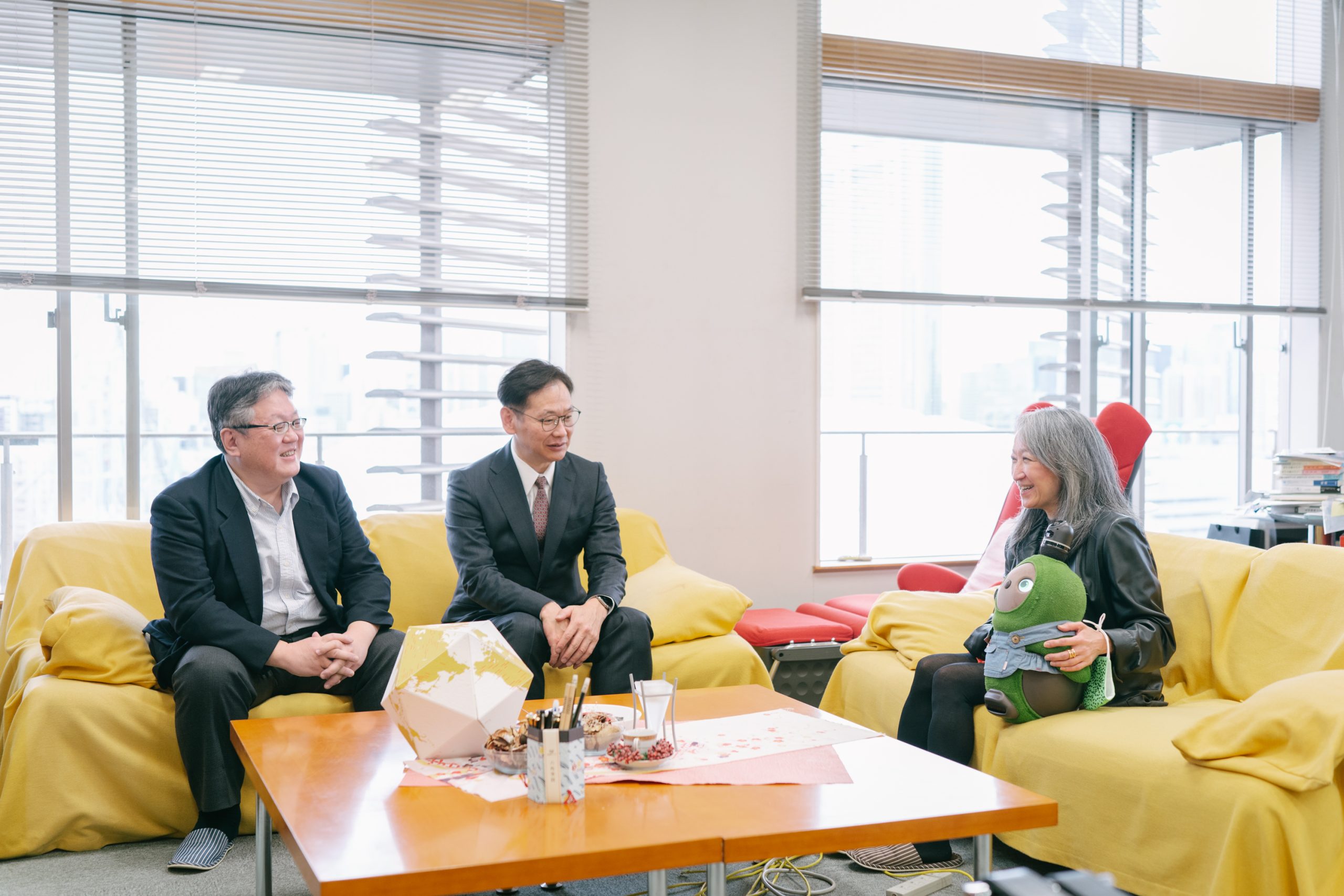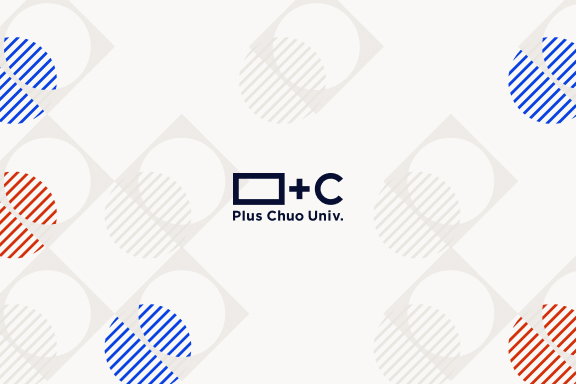Outline
総合大学である中央大学は、社会貢献のありかたとして認知多様性の研究を推進しています。この研究では、理工分野に根差す技術開発と、その社会実装において生じる課題に対する人文社会系のアプローチを融合することが求められます。この融合をスムーズに行うための一つのツールとして中央大学が制定したのが「研究クラスター形成支援制度」です。
As a university focused on comprehensive education and research, Chuo University conducts advanced research on Cognitive Diversity with an aim of contributing to society. This research demands the fusion of technology development—that is rooted in science and engineering—with humanistic and social approaches that tackle the challenges that emerge from the social implementation of this technology. To facilitate this fusion in a streamlined manner, Chuo University has established the “Research Cluster Formation Support System.”
この制度は、将来的に本学の特色となりうる学際的研究、かつ学際的研究を通じて外部資金獲得を目指す研究に、本学から助成金を提供するというものです。他大学や企業の研究者も参加し、優れた学際的学術研究を格段に発展させるとともに、学際融合の推進による研究力の強化を目指しています。
This system provides subsidies from the university to conduct interdisciplinary research that can obtain external funding. This could become a feature of our university in the future. Researchers from other universities and companies are also invited to participate in this program, with the aim of conducting outstanding interdisciplinary academic research and strengthening research capabilities through the promotion of interdisciplinary fusion.
今回は、法学部の工藤裕子教授が代表を務めるテーマ「社会的弱者支援エージェント技術の社会実装に向けた方法論の開発」をご紹介します。このプロジェクトでは、ロボットやCGキャラクターを活用する育児エージェントや高齢者介護エージェントが社会に実装されるときに生じる倫理的、法制度的、社会的課題を特定することなどを目的としています。その背景には、各研究者が取り組んでいる共通のテーマである認知多様性が含まれています。
In this issue, we introduce Professor Hiroko Kudo from the Faculty of Law, who is leading a project titled “Implementation of Agent Technology to Support Vulnerable Populations.” The project aims to identify the ethical, legal, and social challenges that arise when childcare agents or older adult care agents that utilize robots or CG characters are implemented in society. The common theme that connects all the researchers working on this project is Cognitive Diversity.
そこで、工藤先生と、日立基礎研究所で脳科学を専門とする牧敦先生、産業技術総合研究所で感性工学・福祉情報工学を専門とする坂本隆先生に集まっていただき、認知多様性に対してどのように取り組んでいるのか鼎談していただきました。
Therefore, we met with Professor Kudo, Dr. Atsushi Maki, a neuroscientist at the Center for Exploratory Research, Research and Development Group, Hitachi, Ltd., and Dr. Takashi Sakamoto, an expert in Kansei (impression or affective) engineering and welfare information technology at the National Institute of Advanced Industrial Science and Technology (AIST), to discuss how they address Cognitive Diversity.
なお、認知多様性という言葉について、本プロジェクトでは人間の心理や感情、人間関係や社会の中での立ち位置など幅広い分野を扱っていることから、通常の学術用語である認知多様性ではなく「コグニティブ・ダイバーシティ(Cognitive Diversity)」と本記事では表記します。
In this project, we use “Cognitive Diversity“ slightly differently from the original term used in psychology in order to cover perspectives from a wide range of fields, such as human psychology and emotion, human relationships, and social standing.
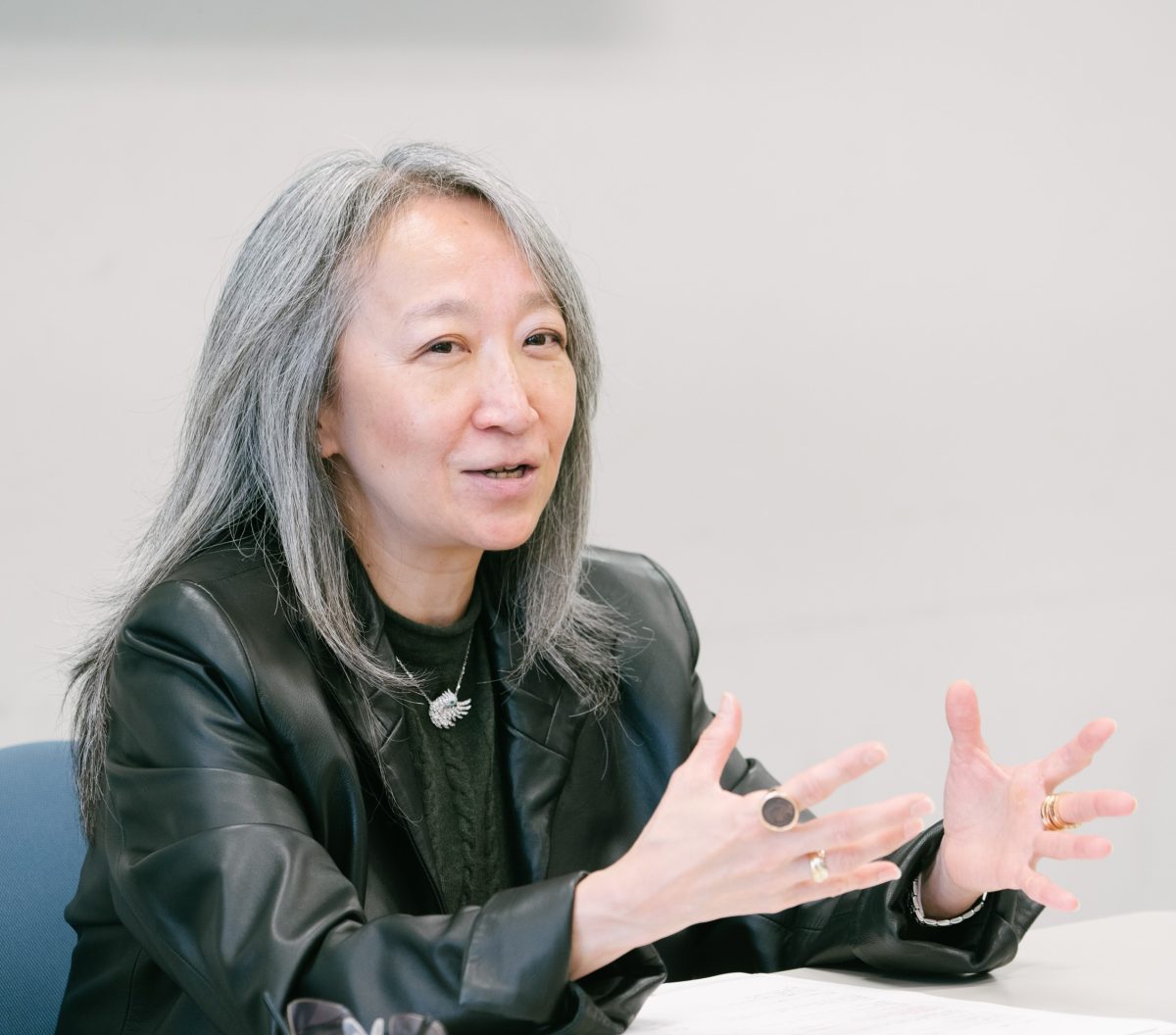
工藤 裕子
法学部 教授
公共政策学、公共経営論専攻。Ph.D.(公共政策学。ヴェネツィア大学より1998年受領)。リュブリャナ大学行政学部客員教授。早稲田大学教育学部専任講師、助教授を経て現職。内閣府経済社会総合研究所客員研究員、財務省財務総合政策研究所上席客員研究員等を歴任。行政のデジタル化、スマートシティ、地方行財政などを研究。
Hiroko Kudo
Professor, Faculty of Law, Chuo University
Prof. Dr. Hiroko KUDO is full professor of public policy and management at the Faculty of Law, Chuo University and visiting professor at the Faculty of Public Administration, University of Ljubljana. She earned a Ph.D. in Public Policy at the University of Venice in Italy and was associate professor at Waseda University, visiting research fellow at the Economic and Social Research Institute of the Cabinet Office, and senior visiting research fellow at the Policy Research Institute at the Ministry of Finance, both of the Japanese Government. Her main research topics include e-Government and digitalization of public administration, Smart City, co-production in public service delivery, and local public finance and governance.

牧 敦
株式会社日立製作所 基礎研究センタ 主管研究員
慶應義塾大学 理工学研究科機械工学専攻 修了。株式会社日立製作所に入社後、中央研究所、基礎研究センタ、本社・新事業開発本部などを歴任。光による脳機能計測技術・トポグラフィの開発を初期から担当。脳神経科学に基づく環境デザインの方法論開発と社会実装を推進。著書:心にひびくデザイン。博士(工学)。
Atsushi Maki
Chief Researcher, Center for Exploratory Research (CER), Hitachi, Ltd.
Dr. Atsushi MAKI, who holds a PhD in Engineering, graduated from the Department of Mechanical Engineering, Faculty of Science and Technology, Keio University. Since joining Hitachi, Ltd., he has been involved in many different roles, including at the company’s Central Research Laboratory, the Center for Exploratory Research, and the New Business Development Department at the company headquarters. Right from his initial days of joining, he was in charge of the development of brain-function measurement technology using light (optical topography). Dr. Maki is a driving force in methodology development for environmental design based on neuroscience, and its implementation in society. Author: Design that Impresses the Heart.
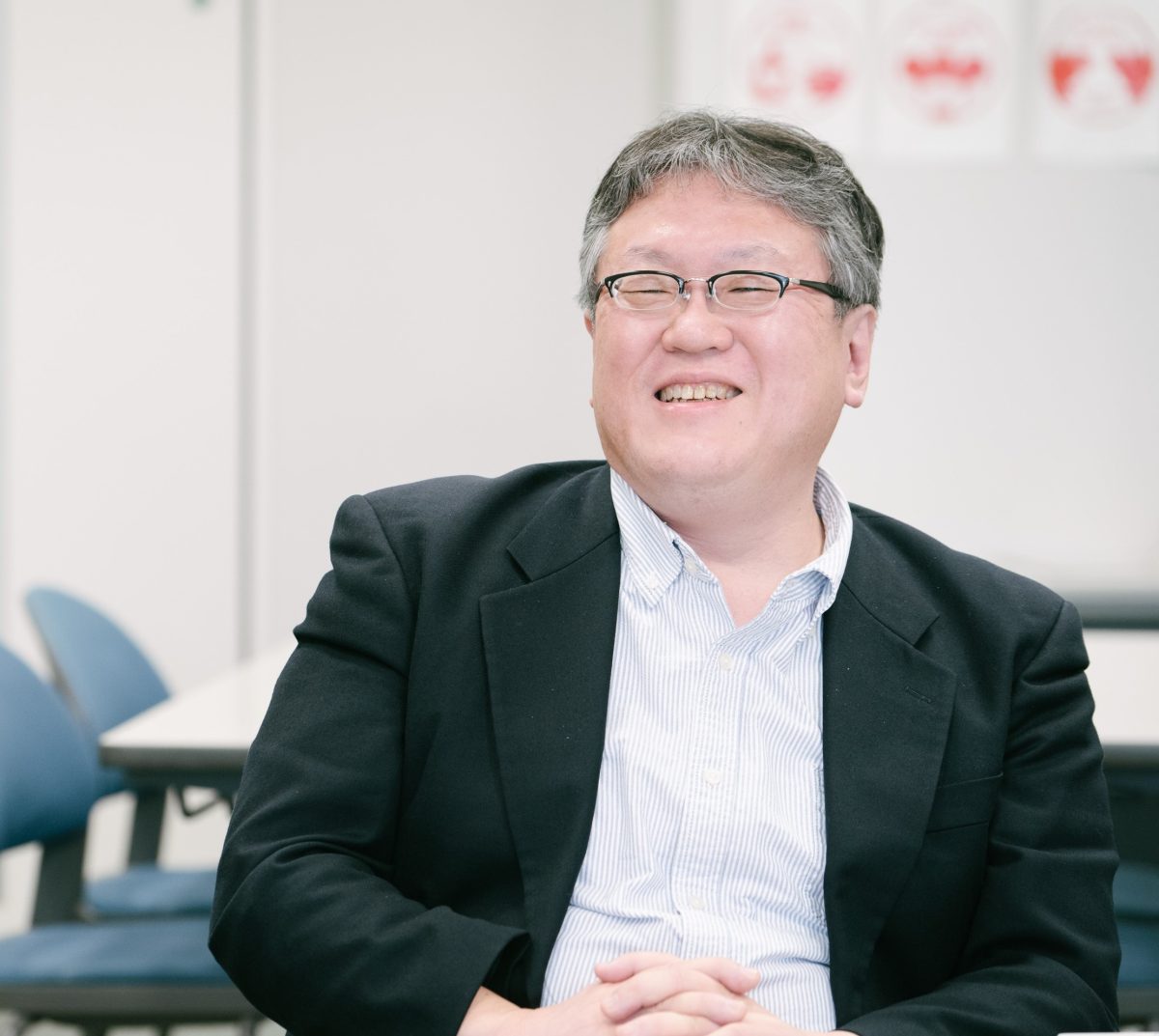
坂本 隆
国立研究開発法人 産業技術総合研究所(人間拡張研究センター)主任研究員
大阪大学大学院基礎工学研究科にてサイバネティクスと生体計測を専攻し、1993年に博士(工学)を取得。中央大学大学院理工学研究科(連携大学院)客員教授を兼務。学術誌『Color Science Research』編集委員長。感性工学、福祉情報工学、色彩科学、人間拡張技術を専門とする。
Takashi Sakamoto
Senior Research Scientist of Human Augmentation Research Center, National Institute of Advanced Industrial Science and Technology (AIST).
Dr. Takashi SAKAMOTO is Senior Research Scientist of Human Augmentation Research Center, National Institute of Advanced Industrial Science and Technology (AIST). He received his Ph. D. in Engineering Science from Osaka University in 1993. He holds another position as a visiting professor at the Graduate School of Science and Engineering, Chuo University. He is also the editor-in-chief of a brand-new peer-reviewed journal, “Color Science Research,” published by the Color Science Association of Japan. He majored in cybernetics and biometrics. His current research topics are Kansei engineering, welfare information technology, color science, and human augmentation technology.
それぞれが考えるコグニティブ・ダイバーシティ
Cognitive Diversity as Considered by Each
——3人がそれぞれの研究の中でとらえているコグニティブ・ダイバーシティを教えてください。
Q: Could you each explain how you apply Cognitive Diversity in your respective research?
工藤教授(以下、敬称略):私の分野で課題となるダイバーシティの典型例は医療政策などですが、今回のプロジェクトで取り扱う親子関係なども含まれます。
Professor Kudo (hereinafter, titles and honorifics will be omitted): In my field, diversity typically includes issues such as healthcare policies, but also encompasses the parent–child relationships addressed in this project.
例えば医療では、画一的に治療するのではなく、患者個人の特徴や家族の病歴、遺伝などを考慮して治療法や投薬を調整するという医療のパーソナル化が、2010年代からイギリスでいわれてきました。私は行政学の視点から、この医療のパーソナル化や予防医療が人々のウェルビーイングに、そして最終的に社会コストにどう関わるかを研究しています。
For example, in the field of medicine, the UK has advocated for personalized medicine since 2010, which refers to the adjustment of treatment methods and medications based on individual characteristics, family history, heredity, and more, rather than treating all patients uniformly. From a public administration perspective, I am researching how such personalization and preventive medicine affect people’s well-being and ultimately, the cost to society of such interventions.
本プロジェクトで注目していることの一つが親子関係です。親子の間に、ロボットやAIからなる子育てエージェントが介入したときに親子関係がどう変わるのかをポイントにしています。親子関係は家庭によって異なり、同じ親子でも状況によって変わります。親子がお互いをどう認知するか、そこにはコグニティブ・ダイバーシティの存在が前提となります。
A key focus of this project is parent–child relationships. We are exploring how the relationship changes when a child-rearing agent comprised of robots or AI intervenes. Parent–child relationships differ between families and, depending on the situation, between the same parent and child too. How parents and children perceive each other is rooted in Cognitive Diversity.
牧:私にとってのコグニティブ・ダイバーシティへのアプローチは、脳から考えるということになります。そこで、私たちは脳の状態を理解することを目的として光トポグラフィという技術を開発してきました。
Maki: When it comes to my approach to Cognitive Diversity, I focus on the brain. We have developed a technique called “optical topography” to understand the state of the brain.
研究を通して実感したことは、脳の働きには多様性があるということです。同じ刺激(見るものや音など)でも、人によって脳活動の変化が異なります。脳によって社会が構成されていることを考えると、多様性のある脳のはたらきを理解する方法論を確立し、深く理解してよりよい社会を作ることが大切であると考えるようになりました。
Through our research, we have come to realize that there is Diversity in brain function. We have personally experienced that brain activity varies differently in different people, even when they are exposed to the same stimuli (such as things we see or the sounds we hear). Considering the fact that our society is composed of brains, we believe that it is important to establish a methodology to understand the diverse functioning of the brain and create a better society.
脳の中に作られる神経回路は、育ってきた環境と遺伝子との相互作用で、唯一無二のものとなります。私たちが行ってきた研究の中でも、生まれた直後の新生児の脳は、第一言語の音声に対して顕著に反応するというものがありました。私たちは、生まれてすぐに多様な文化的背景を背負っているのです。そう考えると、平均値で人間の認知を理解し、社会の在り方に結論付けることはかなり難しいと気づかせてくれます。
Neural circuits that develop in the brain become unique due to the interaction between our genetic makeup and the environment in which we grow up. Our research revealed that the brains of newborns respond significantly to the sound of the first language that they hear after birth. We are born with diverse cultural backgrounds, and this makes you realize that it is difficult to understand human cognition through averages and draw conclusions on the state of society.
一つの取り組みとして、発達に伴う脳のはたらき方の変化を調べて、その知見に基づいた乳幼児向けおもちゃを開発しています。おもちゃは親子の間にあって親子関係と子供の脳発達を支援するものですが、前述の子育てエージェントはおもちゃと違って学習をしながら変化していくことが可能ですし、また、インターネットで外の社会とつながっていて孤立や孤独から救うこともできるかもしれません。そのような子育てエージェントがやってきたとき、親子関係はよりよくなるのか。子供の成長にとってよい介入ができればとても面白くなると考えながら研究を進めています。
One of the initiatives we have undertaken, is to elucidate the changes that occur in brain function during development, with the goal of developing toys for infants and toddlers. These toys are intended to support the parent–child relationship and the development of the child’s brain. Unlike traditional toys, the parenting agents we are studying can learn and change over time. They may also be connected to society on a larger scale through the internet, potentially mitigating issues related to isolation and loneliness. We want to understand whether introducing such parenting agents can improve the parent–child relationship and contribute to positive interventions during children’s growth phases.
坂本:私の専門は感性工学で、人の心理的な状態を行動観察や生体計測などを用いて捉えようしています。同じ人でも心や感性は時々刻々と変化しており、その変化を捉えることで、コグニティブ・ダイバーシティに対応しようとしています。
Sakamoto: My expertise is in Kansei (impression or affective) engineering, which is used to explore people’s psychological states using behavioral observations and physiological measurements. Even in the same person, emotional and cognitive status can change from time to time. We aim to address Cognitive Diversity by understanding these changes.
人というものは、あるとき何かしらの経験をすると、それまで抱いていたある物事に対する認知が一気に変わってしまうことがあります。例えば小倉百人一首に、「逢ひ見ての のちの心に くらぶれば 昔はものを 思はざりけり」という権中納言敦忠の和歌があります。逢瀬を遂げてしまったら、以前は何も考えてなかったと言うほどに、相手に対する気持ちや捉え方すら変わってしまったという趣旨の歌ですが、この現象は恋愛に限ったことではありません。私たちが感性や認知と呼んでいる物事の感じ方や捉え方も、何かしらの刺激を受けたり、学習をしたり、経験をしたりすることで常に変化しているのです。この百人一首の和歌は、コグニティブ・ダイバーシティの特徴を端的に表していると思っています。
When people have experienced a special event, their cognition about them may change entirely at once. For example, in the Ogura Hyakunin Isshu (an anthology of 100 Japanese poems from 100 different poets compiled in the 13 century), there is a waka (a Japanese classical poem with a 5-7-5-7-7 syllabic structure) by Gon Chunagon Atsutada that reads, “After seeing you / my heart aches so much more / than it did before. / The past pains of my yearning / as though those thoughts were nothing.” This waka illustrates how meeting someone can change how we feel and recognize someone through a new and different lens. This waka means that our cognition varies greatly through some experiences.. This phenomenon is not limited to romantic situations. The way we feel and perceive things, which we call Kansei and cognition, is constantly changing through different stimulations, learnings, and experiences. I think this waka from the Ogura Hyakunin Isshu is a typical example of the characteristics of Cognitive Diversity.
コグニティブ・ダイバーシティの考え方に基づけば、人から物事の感じ方や捉え方に関する情報を計測し、その情報を分析した上で、今度はその情報に適したフィードバックを返すことで、その人の物事の感じ方や捉え方、つまり認知を変えることができると考えています。子育てエージェントが、例えばネットワークとつながっていて、その地域の医療担当者や他の親子と情報を共有し、エージェントから適切なフィードバックを返してあげることができれば、硬直化している親子関係を改善できるかもしれません。
According to the concept of Cognitive Diversity, we can measure how people feel and perceive things, analyze this information, and provide appropriate feedback to change their cognition. For example, a parenting agent can be connected to a network, such as to other medical personnel or parents and children, and can relay appropriate feedback to them. In such a case, it might be possible to improve strained or dysfunctional parent–child relationships.
私の所属する産総研は、大学の基礎研究と企業の製品開発を共に理解した上で、それらに対する橋渡しの役割をしようとしています。基礎から応用まで見ることができる公的研究機関の立場で参加する研究者として、このプロジェクトで果たす役割はすごく大きいと思っています。
My research institute, AIST, aims to serve as a bridge between basic research at universities and product development in industry, taking into account both aspects. As a researcher participating in this project from the position of a publicly funded research institution that can supervise research from the basic to the applied level, I believe that my role is very important.
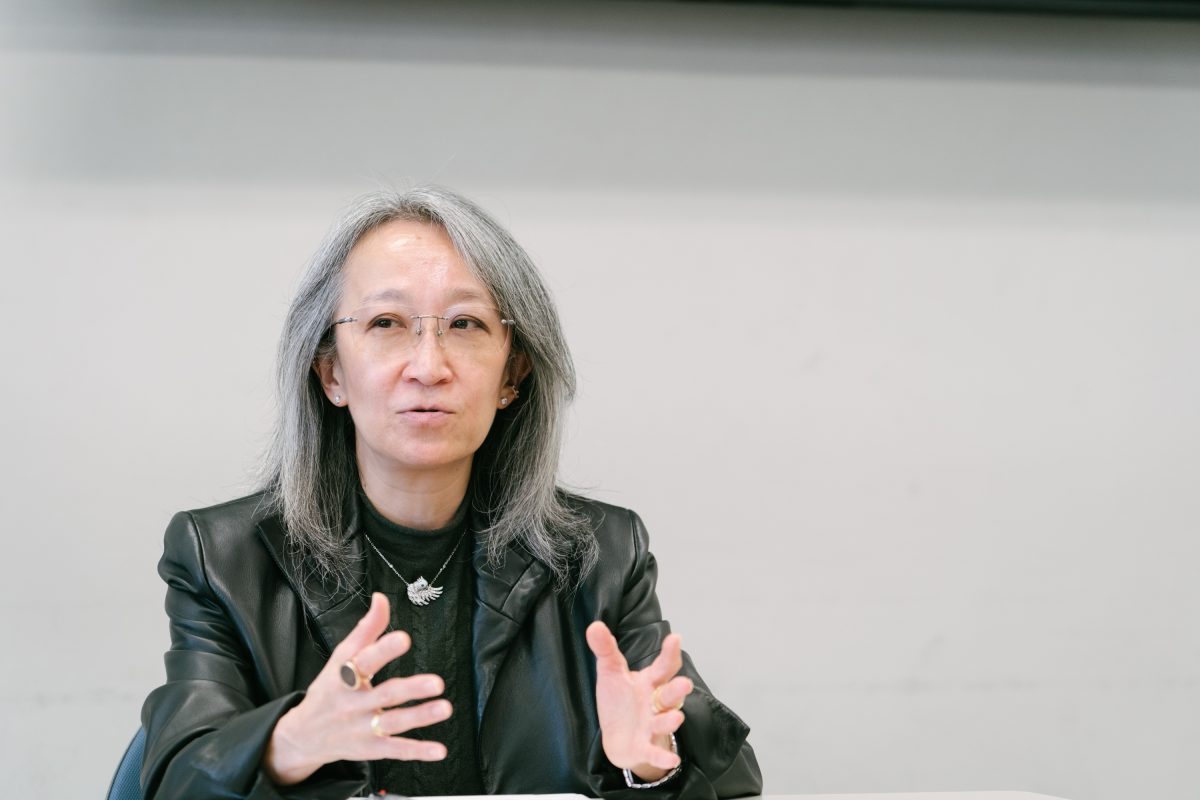
コグニティブ・ダイバーシティがあるからこそ認知を変えられる
Cognitive Diversity is what Enables Cognitive Change
——皆さんが考えるコグニティブ・ダイバーシティに対して、それぞれどのような研究に取り組んでいますか。
Q. What kind of research are you conducting on Cognitive Diversity in your respective fields?
坂本:私が産総研で行っている研究の一つは、色弱者をサポートする技術の開拓です。
Sakamoto: One of the research projects I am working on at AIST is the development of technology to support people with color vision deficiency.
私たちが研究しているサポート技術は、色弱者が単に色を識別できるようになればいいというものではなく、色弱者の気持ちを汲んだり、色弱者が他の人と同じ印象や感情を共有したりすることも、大切だと考えています。生活の質(QOL)を考慮して、その人の気持ちまで考えてあげるテクノロジー、その人に寄り添うテクノロジーを目指して研究開発をしています。
The supportive technology that we are researching not only helps color vision-deficient individuals to simply identify colors, but also understands their feelings and enables them to share the same impressions and emotions as those without color vision deficiency. We are conducting research and development toward technology that can empathize with and support them, with the aim of considering the quality of life (QOL) of color vision-deficient individuals and taking their feelings into account.
その人に合わせたテクノロジーを提供するという意味では、弱者の立場になって考え、気持ちよく過ごせるようにサポートする技術は、コグニティブ・ダイバーシティに含まれる研究テーマの一つであり、社会で広くいわれている「インクルージョン」を実現するための重要なテクノロジーだと思っています。
In terms of providing technology tailored to an individual, we believe that developing supportive technology suited to vulnerable populations and helping them feel comfortable is one of the research themes included in Cognitive Diversity. This technology is a remarkable tool to realize the concept of “inclusion,” a term widely used in education and welfare, as it allows us to provide the support that meets the needs of everyone.
牧:インクルージョンというと、人間は多様であることを前提に包含していこうという考え方ですよね。とても大切ですね。
Maki: When you say inclusion, you mean recognizing and embracing the Diversity that exists among humankind, right? I think this is quite important.
工藤:社会科学ではLGBTQとの関連で取り上げられることがありますが、近代社会における最も重要なインクルージョンは人種問題です。日本ではあまり注目されてきませんでしたが、欧米のように多人種、多文化共生の国では生活習慣や価値観、宗教などの異なる人たちが同じ地域に住んでいるとき、どう社会をつくっていくかという問題が常にあります。
Kudo: While social sciences occasionally discuss inclusion in the context of LGBTQ issues, race is the most crucial aspect of inclusion in modern society. Although it has not garnered much attention in Japan, in multicultural nations such as those in Europe and America, building a society where people with varying lifestyles, values, religions, and other factors can coexist, is a constant concern.
坂本:日本では障がい者を区別しないという文脈でインクルージョンがよく使われていますよね。ただ私たちは、さらにインクルージョンの概念を拡張して考えています。
Sakamoto: In Japan, the term “inclusion” is often used in the context of supporting people with disabilities. However, we are expanding the concept of inclusion even further.
たとえばテレワークとオフィスワークが混在するようになって、会社の会議室に集まっている人たちと、自宅からオンラインで参加する人で一緒に会議を開くとします。しかし、オンラインで参加している人からすると会議室の雰囲気がわかりにくくなり、コミュニケーションが取りづらくなって、「取り残された」と感じるようになります。心当たりのある人もいると思いますが、これはまさにインクルージョンの問題と捉えることができます。
For example, let’s say that teleworking and in-person (office) working are combined, and a meeting is held where some people gather in the company’s meeting room while others participate online from their homes. For those participating online, it becomes difficult to understand the atmosphere of the in-person meeting in the real office room, and communication becomes more challenging, causing them to feel “left behind.” Some of you may have experienced this situation, but it can be seen as an issue of the concept-expanded “inclusion.”
つまり、人がそれぞれもっている固有の感じ方や捉え方の特性だけでなく、置かれている状況でさえもコグニティブ・ダイバーシティに関わる要素があるということです。そうした状況の存在に気づき、全員にとって気持ちのいい解決策を見つけることが、コグニティブ・ダイバーシティが目指す回答の一つだと思います。そのために私たちは、その人がおかれた状況を様々な方法で再現をして、現状を変えていけるようなフィードバックを返すことを考えています。
In other words, not only do individuals have unique ways of perceiving and understanding things, but their situations also play a role in Cognitive Diversity. Recognizing the existence of such situations and finding solutions that can help everyone is one of the answers that Cognitive Diversity seeks to provide. To achieve this, we are considering providing feedback in different ways by reproducing a person’s situation and changing the current situation.
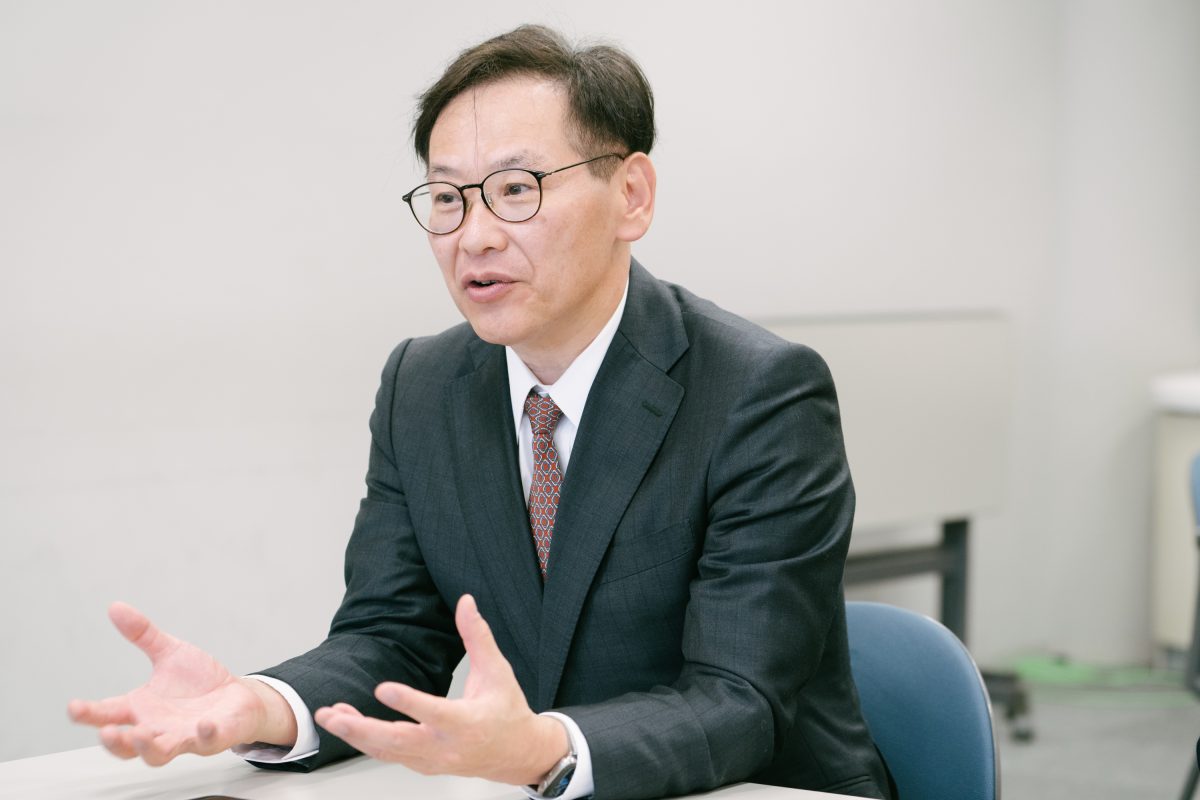
——フィードバックを返す、とはどういうことですか。
Q: What do you mean by “giving feedback”?
坂本:たとえばVRゴーグルをかけてメタバースの世界に入ると、女性のアバターで操作するとセクハラを受けたり、黒人のアバターでは差別を受けたりするという報告があります。そうした嫌な経験をする人がいることは残念でありますが、別の見方をすれば、メタバースの世界は「さまざまな立場の人の状況を仮想体験できる」という特徴もあるのです。この事実を逆手にとって、コグニティブ・ダイバーシティ、つまり認知を変えてしまうような仮想体験をした人が、その体験に基づいて現実世界を変えていくことで、現実世界がよりよいものになる、そのようなフィードバックを考えたいと思っています。
Sakamoto: Consider this example. There have been reports of people wearing VR goggles and entering the metaverse, only to experience sexual harassment while operating their avatar as a woman or discrimination while operating their avatar as a Black person. While it is unfortunate that people have had such unpleasant experiences, the metaverse also enables others to “virtually experience the situations of people in different circumstances.” Taking advantage of this fact, we would like to consider feedback that would enable people who have had virtual experiences that change their cognition through Cognitive Diversity, to change the real world based on those experiences. This way, the real world can become a better place.
工藤:以前は高齢者をシミュレーションするために手足に重りをつけたりゴーグルを着けて視力を悪くしたり視界を狭くしたりしましたが、それをVRやメタバースで体験できるようにもなりましたよね。
Kudo: In the past, to simulate the experience of older adults, weights were attached to the hands and feet, or goggles were worn to impair vision or narrow the field of view. However, with the advent of VR and metaverse technology, it is now possible to experience these situations virtually.
坂本:丁寧さのレベルを様々に変えた接客や、非常事態における避難誘導や行動予測、病院や介護におけるオペレーションなど、現実では難しい臨場感をともなった訓練をすることが、VRなら比較的簡単にできます。
Sakamoto: With VR technology, it is relatively easy to conduct training with a realistic sense of presence that is difficult to replicate in reality, such as providing customer service with varying levels of politeness, emergency evacuation guidance and behavior prediction, and operations in hospitals and care facilities.
工藤:昔は現場で実際に実験していたことがVRで実現できるようになり、商品開発などにも活用されているようです。
Kudo: The experiments that were conducted on-site in the past can now be conducted using VR, and I understand they are now being utilized even in product development and other areas.
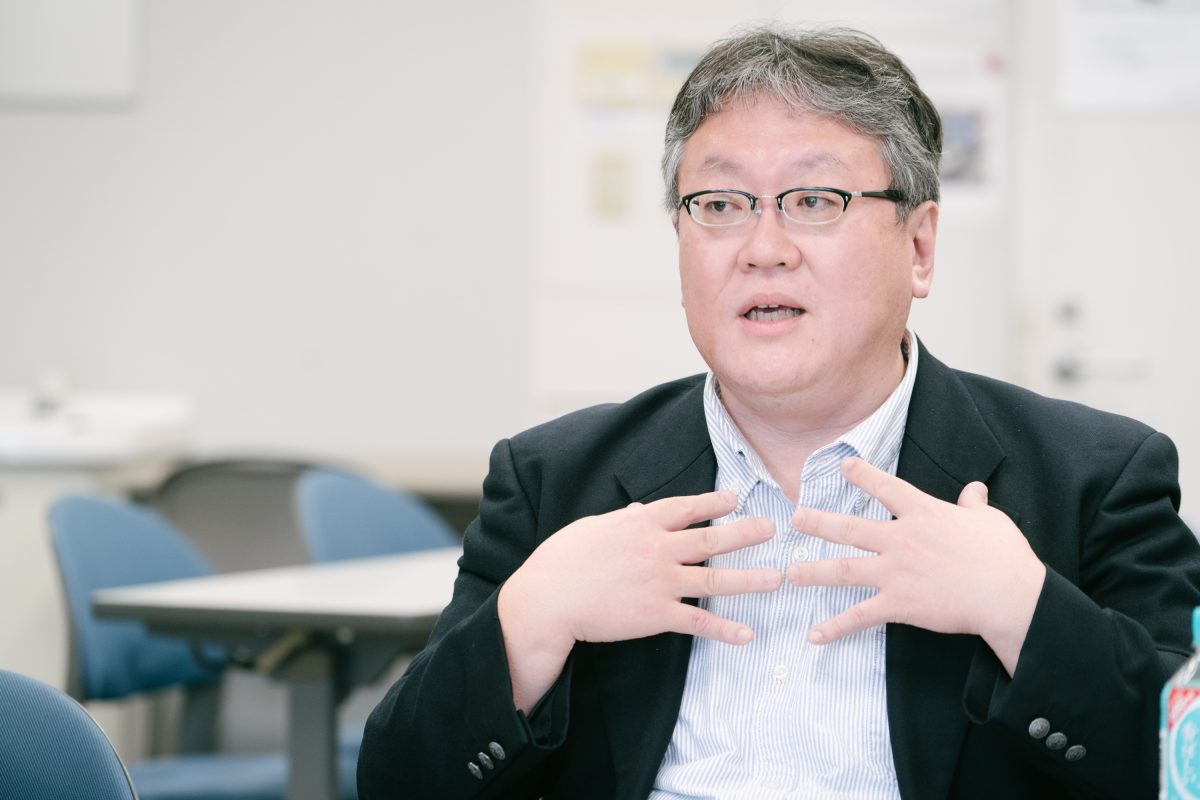
——「認知を変える」ということは、使い方を間違えると洗脳や印象操作にならないのでしょうか。
Q: When considering the concept of “changing cognition,” isn’t there a risk of being misused for brainwashing or impression manipulation?
工藤:確かにそこは難しいところです。私の研究領域であるナッジも、その点は避けて通れません。
Kudo: Certainly, that is a difficult issue. Even in my research area, which is nudge theory, we cannot avoid this point.
ナッジとは、大きなインセンティブなしに人々が自発的に最適な選択を取るためのしくみで、1990年代後半にイギリス政府が取り組み始めたことで知られています。例えば、薬物中毒の人であれば、刑罰を与えるのでなく、どのようなインプットがあれば再犯を防止できるか、つまり行動変容を起こせるか、などの取り組みがあります。
A nudge is a mechanism that encourages people to voluntarily make optimal choices without major incentives. This concept came into the limelight in the late 1990s, when the British government began implementing it. For example, for drug addicts, instead of resorting to punishment, efforts were made to prevent relapse by inducing behavioral changes through effective inputs.
政策としてのナッジの場合、何が善の価値をもつのかは政府が決めます。一方、日常的なサービスにおいては、そのサービスを提供する企業が価値を決めることになり、そこになんらかの誘導や操作が生じるという問題が起きます。
In the case of using nudge as a policy, the government determines what is considered valuable as “good.” On the other hand, in everyday services, the company providing the service determines the value, which can result in some form of steering or manipulation.
政策としてのナッジについては、以前はともすると一辺倒で、人々に同じメッセージを与えて同じように行動変容を起こそうというものでした。でも、例えば省エネを呼びかけるとしても、すでに省エネに取り組んでいる人にいくら呼びかけてもあまり意味がないですよね。まだ省エネに取り組んでいない人だけにメッセージを発信するといったように、ナッジにもパーソナル化が必要です。
In the past, nudging as a policy tended to be one-sided, with the aim to induce behavioral changes by sending across the same message to everyone. However, if we call for energy conservation for instance, it doesn’t make much sense to call for it to those who are already practicing it. Personalization is also necessary to nudge, such as sending messages only to those who have not yet taken steps toward energy conservation.
ナッジもテクノロジーも、政策に活用するならば確固たるデータが必要です。「エビデンス・ベースド・ポリシー・メイキング(証拠に基づく政策立案)」と言いますが、この分析も私の研究領域です。
Nudge and technology both require solid data if they are to be utilized in policies. This is known as “evidence-based policymaking,” and conducting such analyses is also a part of my research.
牧:今、善や価値をどう決めるかという話が出ましたが、私の研究対象である脳でいうと、「脳は外の状態を学習して育つ器官」と定義した場合に「脳が育まれる状態」を善と捉えています。
Maki: You just brought up a question. How should one determine what is good or valuable? In the context of my research on the brain, if we define the brain as an organ that grows and learns from external conditions, I consider the “state in which the brain is nurtured” to be good.
工藤:「脳を育む」ってどういうことですか。
Kudo: What do you mean by “nurturing the brain?”
牧:より良く生きるために学ぶということです。例えば、亡くなられた赤ちゃんの脳内のシナプス(神経と神経の接合部)を調べた研究がありますが、見るときにはたらく視覚野では生後8ヶ月にシナプスの数がピークを迎えることがわかりました。バンダイと脳科学に基づいたおもちゃを開発したときには、この時期の赤ちゃんには視覚の刺激を与えるようなおもちゃを作るというのが開発コンセプトになりました。
Maki: It means learning to live better. For example, a study examined the synapses (junctions between neurons) in the brain of a deceased baby, which showed that the number of synapses in the visual cortex, which is involved in seeing, peaks at eight months after birth. When developing toys based on neuroscience for Bandai, the focus was on creating toys that can stimulate vision for babies during this period.
一方、言語野のシナプスは1歳半から3歳にかけて急増します。この時期は覚える言葉の数が急増するので、この時期には言語の発達を支えるおもちゃが適切ということになります。
On the other hand, the synapses in the language area rapidly increase between 1.5 to 3 years of age. Since the number of words learned increases rapidly during this period, it is appropriate to have toys that support language development during this time.
4歳ごろになると他人の視点で考える力が育ち始め、キャラクターを使ったおもちゃが登場し、「ごっこ遊び」ができるようになります。そういったおもちゃで遊ぶと、人が考えていることを理解する力が育まれることがわかってきました。
Around the age of 4, the ability to think from the perspective of others begins to develop, and toys featuring characters appear, allowing for imaginative play. It has been discovered that playing with such toys helps develop the ability to understand what people are thinking.
このように、子どもの脳の成長に合わせて、ちょっとがんばれば手が届くような刺激を与えてくれるおもちゃが脳を育み、ひいては心を育てると考え、バンダイのおもちゃの商品開発に協力しています。
Therefore, by providing toys that offer stimulating experiences that are within reach of a child’s developmental stage, we believe we can nurture their brains and ultimately, their hearts. That is why I am collaborating with Bandai to develop their toy products.
私たちは、心あるいは脳には、知性だけでなく感性や人とうまくやる社会性などがあり、それらを育むことでよりよく生きていく力につながると考えています。それらを育むには適切な時期(感受性期)があるので、科学的に効果が検証された遊び方(もしかすると教育法かもしれませんが)を価値として提供しています。乳幼児期には限りませんが、よりよく生きるために心(脳)が育くまれる環境を外部から用意してあげることを、「脳を育む」と考えて今なお活動しています。
We believe that the mind or the brain is not only capable of intelligence, but also sensibility, social skills, and other aspects. When nurtured, these aspects can help people live a better life. There are appropriate periods of sensitivity for nurturing these aspects, so we offer scientifically verified play methods (which may even be educational methods) as values. We continue to work under the concept of “nurturing the brain” by providing an environment from the outside to nurture the mind (brain) for a better life, not just limited to infancy and toddler periods.
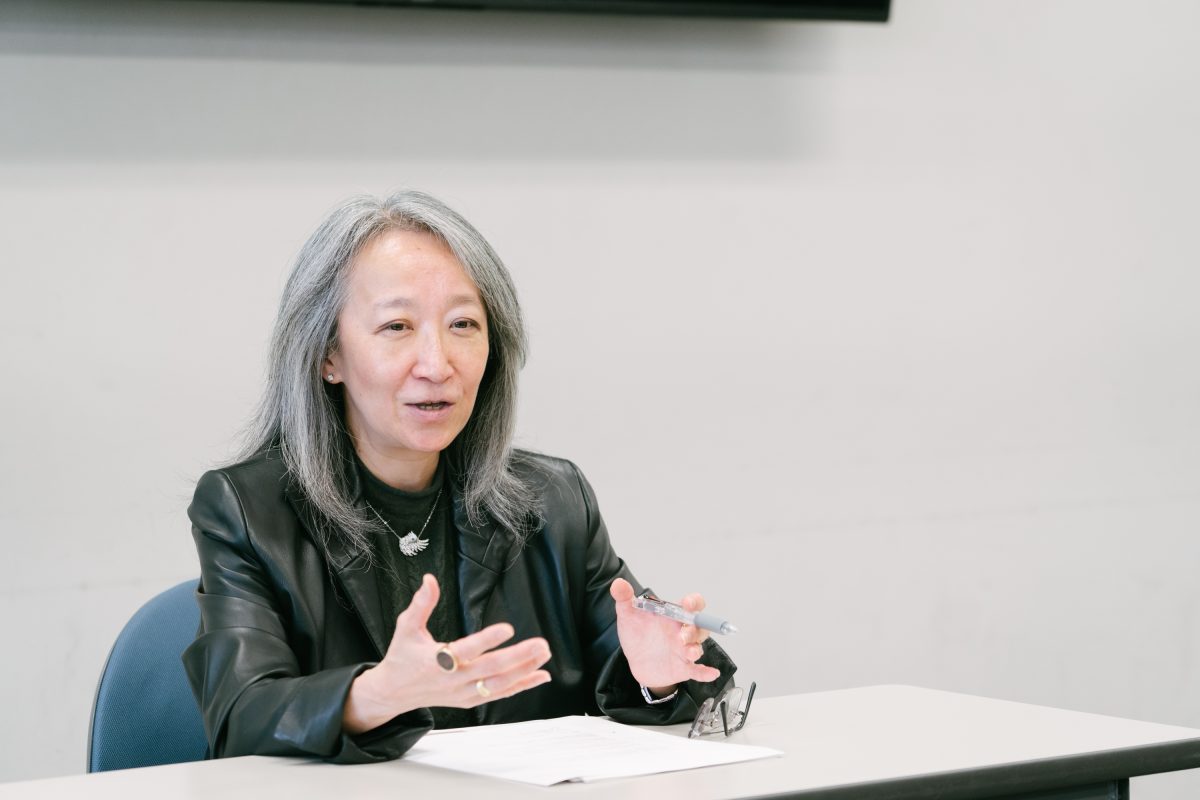
研究クラスターの多様性をいかして対話を進める
Promoting Dialogue through Diversity of Research Cluster
—— 今後、それぞれの研究の中でコグニティブ・ダイバーシティをどのように扱っていきたいですか。
Q: How do you plan to deal with Cognitive Diversity in your research moving forward?
坂本:今回のプロジェクトでいえば、心理・行動・生体情報のセンシングに基づく技術は、親子関係にも適応できると思います。親子関係は常に一定ではなく、和やかなときもあればお互いに機嫌が悪いときもあります。今の技術の進歩は目覚ましく、生体情報の取得、解析、意味づけをリアルタイムに行えるところまできています。親子がどのような心理状態にあるのか理解した上で、その時々の親子関係に応じたフィードバックを子育てエージェントが行うことは、今の技術レベルなら可能なはずです。
Sakamoto: In the case of this project, I believe that technology based on sensing psychological, behavioral, and physiological information can also be applied to parent–child relationships. Parent–child relationships are not always consistent and can sometimes be strained. Technological advancements have been remarkable, and we can now acquire, analyze, and attribute real-time meaning to physiological information. With an understanding of the psychological state of the parent and child, it should be possible for a child-rearing agent to provide feedback tailored to the parent–child relationship at the time.
牧:脳科学は発達障害の診断に活用できる可能性はあります。発達障害の中でも自閉スペクトラム症とADHD(注意欠如・多動症)の診断の区別が難しいとされています。脳機能を計測することでこれらの診断を支援するという研究があります。
Maki: In neuroscience, there is potential to utilize Cognitive Diversity in the context of diagnosing developmental disorders. For example, it is particularly difficult to distinguish between autism spectrum disorder and attention-deficit/hyperactivity disorder (ADHD). Some studies support the diagnosis of these disorders based on the measurements of brain functions.
工藤:大学でも発達障害へのサポートは課題となっています。発達障害は、小さいころから症状があっても親や周囲の人が気づいていないことが多くあります。そういうときに脳機能を計測し、まずは状態を正確に把握できれば対応も可能でしょうし、実際そういう研究が進んでいます。
Kudo: Supporting individuals with developmental disorders is also a challenge in universities. In many cases, symptoms may exist from a young age but go unnoticed by parents and people around them. By measuring brain function in such cases, it might be possible to accurately diagnose and respond to the condition. In fact, research in this area is currently underway.
牧:私個人としては、なぜ脳機能にダイバーシティがあるのかという根本的な事象に興味があります。男の子は青が好き、女の子は赤が好きといったようなことは親を含めた環境からの影響があると思いますが、本当のことはわかっていないので、しっかりと明らかにしたいと考えています。
Maki: Personally, I am interested in the fundamental question of why there is Cognitive Diversity in brain function in the first place. I think that personal preferences such as boys liking the color blue and girls liking the color red/pink are influenced by the environment, including the parents. However, the real reason underlying these preferences is not fully understood, so my goal is to gain a thorough understanding of these issues and provide clarification.
おそらく今日お話ししたことはすべてウェルビーイングにつながってくるでしょう。ウェルビーイングにはさまざまな定義がありますが、産業界としては「よりよく生きることを実現するためのソリューション」と考えています。コグニティブ・ダイバーシティのある世界でウェルビーイングをどう実現するかが大きなテーマになってきます。
It is likely that everything we talked about today relates to well-being. While there are various definitions of well-being, the industry considers it as “solutions that can help achieve a better life.” In a world with Cognitive Diversity, the focus is on how to achieve well-being.
ウェルビーイングは医療分野だけの問題ではなく、文理融合でアプローチすべき重要なテーマです。新しいテクノロジーがやってきたときに、それがどのような技術でどのような倫理的な問題が生じ、どう解決するかという議論は、さまざまな学問から話題を持ち寄ることが必要になります。子育てエージェントで今まさにやるべきことです。
Well-being is an important theme that should not be confined to just the medical field but approached through interdisciplinary collaboration. When new technologies emerge, discussions on the ethical issues surrounding their use and how they can be addressed require the participation of experts from various academic disciplines. This is exactly what needs to be done with parenting agents.
工藤:そうですね。子育てエージェントは第三者の価値観が親子関係の中に入ってきますので、親が子に与えるおもちゃとは大きく異なります。憲法や家族法(民法第4編「親族」と第5編「相続」を合わせたもの)とも関わるので、本プロジェクトの構成員には憲法と家族法の専門家も入っています。
Kudo: That’s correct. Parenting agents are different from the toys that parents give to their children, because third-party values enter the parent–child relationship. It is also related to the Constitution and Family Law (the combination of Civil Code Books IV and V). Therefore, experts in Constitutional and Family Law are also involved in this project.
坂本:こういう議論は産官学が連携して発信すべきだと思っています。企業には法律の体系や将来像を議論する専門家はいないでしょうし、企業の研究開発は5年後くらいのごく近い将来しか見ていません。一方、大学や産総研のような研究機関では、20年後、30年後の未来を予測した研究をしています。もちろん、そうした学問研究だけでやっていても問題解決にならないでしょう。企業側と連携をして、議論を共有していく必要があります。
Sakamoto: I believe that these discussions should be conducted through collaborations between the industry, the government, and academic institutions. Corporations do not have experts who specialize in legal systems or future prospects, and their research and development only focuses on the immediate future, such as the next five years. On the other hand, research institutions such as universities and AIST conduct studies that are based on a predicted future, 20–30 years from now. Of course, only academic research will not solve this problem, and a collaboration with corporations is equally necessary to discuss and share these issues.
牧:企業主導の議論は難しいですね。将来をどう予測してどのような制度を作るのか、そういう合意形成は産官学が連携して取り組んでいくのが理想だと思います。新しい技術には必ず光と影があるので、人間がどう使うかも含めた議論が必要です。
Maki: It can be difficult to have discussions that are led solely by corporations. I believe that it is ideal for the industry, the government, and academia to collaborate in order to predict the future and create appropriate systems. There are always pros and cons to new technology, so it is necessary to have discussions that include how humans will use it.
工藤:現実の変化に合わせて後から法律を変えようとすると、ともするとつぎはぎのパッチワークのようになってしまい、制度が破綻してしまうことがあります。新しい技術が社会実装されたときにどんな問題が起こりうるかを前もって想定し、将来に備えて法律体系や行政制度がどうあるべきかを議論するのが理想です。
Kudo: Trying to change the law afterward to suit the reality of change can often result in a patchwork of measures that ultimately lead to the failure of a system. It is ideal to anticipate what kind of problems may arise when new technologies are implemented in society, and to discuss what legal and administrative systems should be in place to prepare for the future.
ただ実際にはあまり実現できておらず、技術と法律の対話が少ないのが現状です。この研究クラスターのようなチームを組み、それぞれの得意分野ややりたいことを研究しながらも、専門の多様性を活かしつつ、一つの方向を目指すのが理想かもしれないですね。
However, in reality, there are few opportunities for dialogue between experts in technology and law. It may be suitable to form teams such as this research cluster, which utilizes the diversity of expertise while pursuing a common goal, i.e., to conduct research on individual specialties and interests while working toward a common direction.
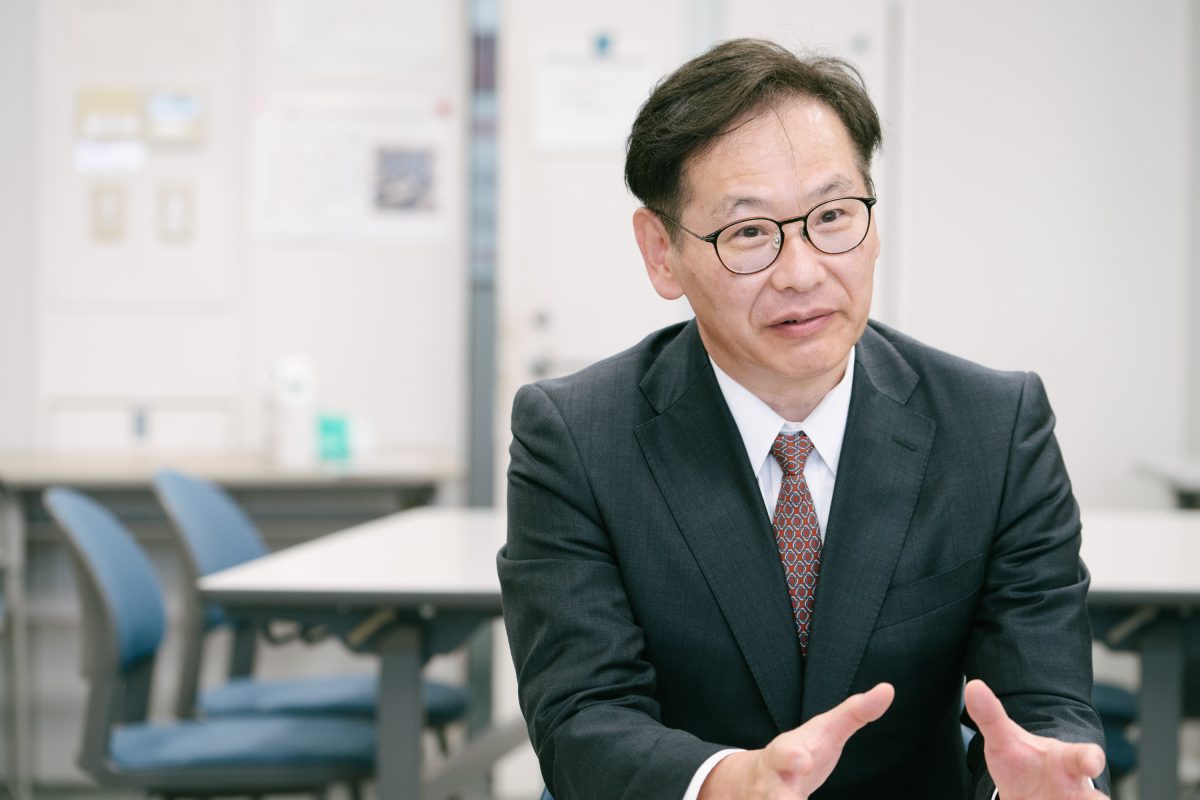
鼎談を終えて
After the Discussion
工藤先生と牧先生、坂本先生の専門分野や研究手法は大きく異なりますがが、コグニティブ・ダイバーシティという共通のテーマのもとに多くの議論を行っています。他の参加メンバーとともに隔週でワークショップを開催し、それぞれの専門分野の知見を持ち寄って深い議論をしてきたとのことです。
Through the common theme of Cognitive Diversity, Dr. Kudo, Dr. Maki, and Dr. Sakamoto have engaged in extensive discussions, despite differences in their areas of expertise and research methods. Along with other team members, they have held workshops every other week, bringing together their respective knowledge to contribute to in-depth discussions.
今回の研究クラスターは2021年に採択され、その後2022年9月に科学技術振興機構(JST)の推進する「未来社会創造事業」の中で「親子相互交流療法を活用した親子のウェルビーイング実現技術」という研究開発課題(代表者:本学理工学部 新妻実保子教授)が採択され、研究クラスターの役割を果たした好例といえます。
The research cluster was adopted in 2021 and later selected as a research and development project titled “Realization of Parent–Child Well-Being Utilizing Parent–Child Interaction Therapy” under the JST-Mirai Program: Innovative R&D for the future in September 2022. This project serves as an excellent example of the role of the research cluster in bringing together experts from diverse fields to tackle a common theme. The project leader is Professor Mihoko Niitsuma from the Faculty of Science and Engineering of our university.
ダイバーシティは科学・社会学両者の観点から注目されているテーマです。ぜひ他大学、企業の方も、中央大学の研究クラスター形成支援制度を利用して、本学の研究者とともに学際的な研究にチャレンジしてみてはいかがでしょうか。
Diversity is a theme that has gained attention from researchers in both scientific and sociological fields. We encourage researchers and companies from other universities to take advantage of Chuo University’s research cluster formation support system and engage in interdisciplinary research with our scholars.
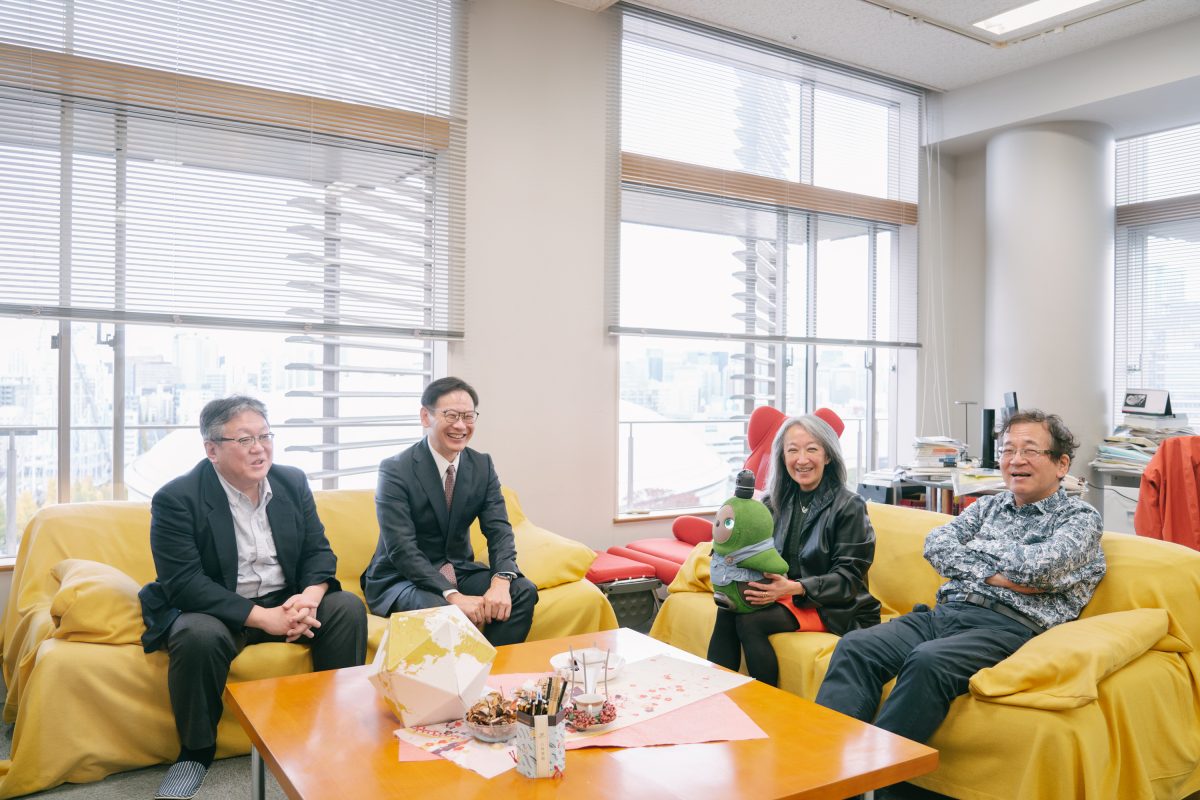
From left to right: Dr.Sakamoto,Dr.Maki,Prof.Kudo,Prof.Kato,Faculty of Science and Engineering,
Photographer:Kato Hajime Writer & Editor:島田祥輔
